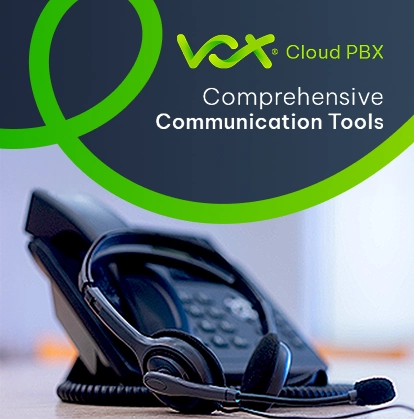You’ve probably read (or, if you’re like us, written) a thousand words about the work from home revolution. Terms like remote offices, hybrid workstations, mobile compatibility and the like, once foreign concepts to any business sphere, are as ingrained in our vocabulary as “I hate sitting in traffic” once was.
There’s a reason for this. Work from home is the here and the now, it’s here to stay and, for all intents and purposes, we’d best get used to it. We also fully understand why – the benefits, convenience and ease of access are immense, productivity is at an all time high and, let’s be honest, what’s more satisfying than being able to sit in those three-hour meetings while still enjoying the cool breeze from your boxer shorts?
That said, WFH does present its own share of challenges and burning questions, one of which we hope to answer today. Without further ado, let’s explore whether Business Fibre is still relevant all the way in 2022…
…First, a recap: why would my business need Fibre at all?
By now, we all know that any Fibre-optic Internet connection can add immeasurable value to an organisation. The technology can no longer be considered new and, with the rate of adoption across businesses and homes alike on a perpetual increase, there are millions of end users worldwide who can testify to its practicality. In fact, it seems that to many, the benefits of Fibre have long outweighed the perceived hassle of switching over from conventional connectivity methods – and with good reason.
Fibre cables utilise pulses of light to transmit Data between any two given points. Based on scientific Data alone, Fibre is proven to be the pinnacle of technology as far as Data communications go – and, as such, a Business Fibre line should STILL be every organisations primary choice as far as Internet goes.
BUSINESS FIBRE BENEFITS
- Speed, speed and more speed
Terms like ‘light speed’ and ‘symmetric speed’ should get you really excited. The reality is that slow Internet connectivity can cost a business up to a week’s worth of production time. That’s huge. Fibre optic cables are thinner, lighter and more durable than ADSL, allowing the Data to travel at light speed – up to 100 times faster than ADSL. This means transferring higher volumes of traffic without impacting on the download speeds. ‘Symmetric’ speed refers to equal upload and download times with Fibre optic connections, so you can expect:
- Faster file transferring
- Uninterrupted streaming
- Faster page load times
- Uninterrupted VOIP (long distance voice calls)
- Take it to the Cloud
The seamless transfer of Data means that you can move your business processes straight into the Cloud. This is a really business-friendly tool for apps, hosting and storage applications with easy access to all cloud-hosted information from anywhere. This also means no more bulky storage devices that are prone to crashing and losing vital information.
- Scalability
The technology allows for huge increments over the limited bandwidth that copper and wireless technologies support. Entry level Fibre offerings start at 10Mbps, which is usually the highest ranges of traditional copper (except, you know, nobody can steal the former). These can easily scale upwards to 100Mbps – or even 1GB if your business requires it.
4.Reliability
Copper cables are notoriously unreliable. The illegal copper market, particularly in SA, makes them vulnerable to theft, they are subject to degradation over the years and susceptible to electromagnetic interference. Heavy traffic flow across the cables slows down Internet connection, a problem for those in big organisations. Fibre cables, on the other hand, are constructed from glass so are not susceptible to theft, electromagnetic interference or weathering. There is also no impact on speed from other users making it the optimum business option.
5.Bring on the Bandwidth
Reaching your Data cap is something every business can attest to and, while Fibre optics are not unlimited, they do offer significantly higher Bandwidth. The following activities traditionally tend to eat up a lot of Bandwidth, so if your business depends on any items below, definitely consider the Fibre optic solution:
- Web conferencing
- Streaming high-definition video
- SIP trunking
- File sharing
- Cloud applications
- Security and resilience to interference
Fibre optic, by its nature, is a point-to-point technology, making it dedicated to you, so there is no sharing of your Fibre line with outside parties like copper or Wi-Fi solutions allow. Fibre is also not susceptible to magnetic, electrical or other types of interference that plague both copper and wireless technologies.
- Cost savings
Once the initial costs have been factored into the installation of Fibre optic cabling, the savings will become increasingly evident. Enhanced speed and reliability result directly in improved business productivity.
Fibre optics also allow for scalability so, as this business grows, so can the Internet connection. This means you don’t have to outlay huge expenses at the start.
Most major cities across South Africa now have access to Fibre Optic Internet services, with smaller towns and outlying areas also poised for connection. It’s important to liaise with the right Internet service provider, however, to ensure you get the right package, for your company.
In short, the advent of work from home is by no means the funeral of the conventional business – there are a plethora of organisations that not just rely but thrive on the traditional workspace environment. True, some places can operate fine without staff coming in every day, but for the most part, there will always be a time, place and connectivity need as far as work is concerned – so can your brand really afford anything less than the best?












